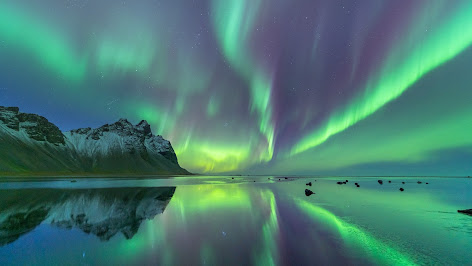Dancing Lights of the North
The Northern Lights, also called Aurora Borealis, are some of the most beautiful phenomena found in nature. The natural miracle, dubbed a "light display," happens when solar particles streams come into contact with our planets surroundings. The result is a hypnotic visualization of bright hues capable of illuminating the night sky in an other-worldly light.
The Science Behind the Magic
It all starts with the sun, a huge ball of plasma continuously sends out clouds full of electric particles (solar wind) at high speed. When these particles reach the Earth, they encounter the magnetic field that surrounds our planet and exerts force on them to turn in its direction rather than approach the atmosphere. However, a few particles successfully burrow through the impression and discover their approach to our atmosphere.
These charged particles, when they hit molecules in the air (like oxygen and nitrogen), excite the atoms or molecules. These emit light when the excited atoms go back to their base state of low energy. The color of the light would depend on the type and the energy level of gas. That might mean green and red - spectacles made all the more striking as they result from collisions with oxygen atoms -- or they could be blue and purple (the colors produced when colliding with nitrogen.
A Symphony of Colors
The Aurora Borealis is not a stationary thing, it moves and flows. A cascading rainbow of colors and patterns whipped by so quickly that it was hard to follow, but slow enough to appreciate each unique light show. At times the lights appear as curtains or ribbons; other times spirals and arcs. The behaviour of Aurora is also closely tied to solar activity and the Earth's magnetic field strength.
Where You Can Go to See This Astrophysical Show
Optimal viewing sites to see the Aurora Borealis are in high-latitude regions close to the Earth's magnetic poles. Iceland, Norway, Sweden, Finland and Canada / Alaska etc are some of the most poplar destinations for Aurora. The Northern Lights are best viewed in winter, when the nights are long and dark. A little known secret is that even in the summer, there's the potential for the Aurora to be bright enough to see.
An Experience To Remember
There are few experiences as memorable as seeing the Northern Lights. Watching the dancing light filling the night sky is a sight to behold, and it makes you marvel at how beautiful our planet really is. The Aurora Borealis is a spectacle that amazes all no matter how seasoned you are as a traveler or in your exposure to nature.



Comments
Post a Comment